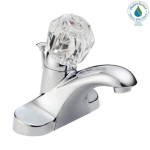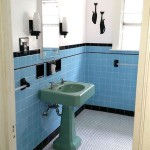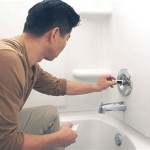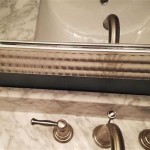Rust Around Bathroom Sink Drain: Causes, Prevention, and Solutions
Rust around a bathroom sink drain is a common problem in many households. It is not only an unsightly issue that can diminish the aesthetic appeal of a bathroom but also a sign of potential underlying damage. Understanding the causes of this rust, implementing preventative measures, and knowing how to effectively address it are essential for maintaining the integrity and longevity of bathroom fixtures.
This article will explore the various factors that contribute to rust formation around bathroom sink drains. It will also detail the best practices for preventing rust accumulation and provide a comprehensive guide to removing existing rust and protecting the drain from future corrosion. By understanding the mechanisms behind rust development and employing appropriate strategies, homeowners can effectively manage and mitigate this widespread issue.
Understanding the Causes of Rust Around the Sink Drain
Rust, scientifically known as iron oxide, is the product of a chemical reaction between iron, oxygen, and moisture. In the context of a bathroom sink drain, the presence of these three elements creates a conducive environment for rust formation. The drain assembly, often made from materials containing iron or steel, is perpetually exposed to water, making it particularly vulnerable to corrosion.
One of the primary causes of rust is the constant exposure to water. Bathroom sinks are frequently used for washing hands, brushing teeth, and other hygiene-related activities, all of which introduce water into the drain system. The residual moisture that remains after each use can react with the iron components of the drain, initiating the oxidation process. Over time, this repeated exposure leads to the gradual development of rust.
The type of water used in the bathroom also plays a significant role. Hard water, which contains high concentrations of minerals such as calcium and magnesium, can accelerate the corrosion process. These minerals can create a film on the drain surface, trapping moisture and promoting the formation of rust. Additionally, certain chemicals present in cleaning products can react with the metal, further exacerbating the problem.
Another factor to consider is the presence of any existing damage or imperfections in the drain's protective coating. Many drain assemblies are coated with a layer of chrome or other corrosion-resistant material. However, if this coating is scratched, chipped, or worn away, the underlying iron or steel is exposed to the elements, making it more susceptible to rust. Even minor imperfections can create entry points for moisture and accelerate the corrosion process.
Furthermore, the overall humidity level in the bathroom can contribute to rust formation. Bathrooms tend to be humid environments due to the frequent use of showers and baths. This elevated humidity increases the amount of moisture in the air, which can condense on the drain surface and promote oxidation. Poor ventilation can exacerbate this problem by trapping moisture and creating a persistently damp environment.
Finally, the age and quality of the drain assembly itself can be a factor. Older drains made from less durable materials are more prone to rust than newer, higher-quality drains. Similarly, cheaper drain assemblies may have thinner or less effective protective coatings, making them more vulnerable to corrosion. Regular inspection and timely replacement of worn or damaged drain components can help prevent rust from becoming a major issue.
Preventative Measures to Minimize Rust Formation
Preventing rust around a bathroom sink drain requires a proactive approach that addresses the underlying causes of corrosion. Implementing a combination of preventative measures can significantly reduce the risk of rust formation and extend the lifespan of the drain assembly. These measures focus on minimizing moisture exposure, protecting the drain surface, and maintaining a dry bathroom environment.
One of the most effective preventative measures is to minimize water exposure to the drain assembly. After each use of the sink, it is important to wipe away any standing water around the drain. Using a dry cloth or towel to absorb excess moisture can help prevent the water from reacting with the metal and initiating the oxidation process. Paying particular attention to areas where water tends to pool, such as the base of the drain flange, is crucial.
Regular cleaning of the sink drain is also essential for preventing rust. Over time, soap scum, hair, and other debris can accumulate around the drain, trapping moisture and creating a breeding ground for bacteria. These organic materials can also react with the metal, accelerating the corrosion process. Using a mild cleaning solution and a brush to scrub the drain area regularly can help remove these deposits and prevent rust formation.
To mitigate the effects of hard water, consider installing a water softener in the home. Water softeners remove minerals such as calcium and magnesium from the water supply, reducing their potential to cause corrosion. While installing a whole-house water softener can be a significant investment, it can provide long-term benefits by protecting plumbing fixtures throughout the home from rust and scale buildup. If a whole-house system isn't feasible, consider a point-of-use filter specifically for the bathroom sink.
Protecting the drain's protective coating is another important aspect of rust prevention. Avoid using abrasive cleaners or scouring pads that can scratch or damage the coating. Instead, opt for gentle cleaning solutions and soft cloths. If the coating is already damaged, consider applying a rust-inhibiting paint or sealant to the exposed metal to prevent further corrosion. Regularly inspecting the drain for any signs of damage and addressing them promptly can help extend the life of the drain assembly.
Maintaining a dry bathroom environment is also crucial for preventing rust. Ensure that the bathroom is properly ventilated by using the exhaust fan during and after showers and baths. This will help remove excess moisture from the air and prevent it from condensing on the drain surface. If the bathroom lacks an exhaust fan, consider opening a window to improve ventilation. Addressing any leaks or plumbing issues promptly can also help reduce humidity levels and prevent rust formation.
Choosing high-quality drain assemblies made from corrosion-resistant materials can also significantly reduce the risk of rust. Stainless steel and brass are excellent choices for bathroom sink drains as they are naturally resistant to rust and corrosion. While these materials may be more expensive than traditional iron or steel drains, they offer long-term durability and can save money on repairs and replacements in the long run. When installing a new drain, ensure that it is properly sealed to prevent water from seeping into the surrounding areas and causing corrosion.
Effective Solutions for Removing Existing Rust
Despite preventative measures, rust may still develop around a bathroom sink drain. When this occurs, timely and effective rust removal is crucial to prevent further damage and restore the drain's appearance. There are several methods for removing rust, ranging from simple household remedies to more specialized chemical treatments. The choice of method depends on the severity of the rust and the materials of the drain assembly.
For mild rust stains, household remedies such as vinegar and baking soda can be effective. Vinegar, an acidic solution, can dissolve rust and loosen its grip on the metal surface. To use vinegar, soak a cloth or sponge in white vinegar and apply it to the affected area. Allow the vinegar to sit for several hours, or even overnight, to allow it to penetrate the rust. Then, scrub the area with a brush or scouring pad to remove the loosened rust. Rinse thoroughly with water and dry the drain assembly.
Baking soda, a mild abrasive, can also be used to remove rust. Create a paste by mixing baking soda with water and apply it to the rusted area. Allow the paste to sit for several minutes, then scrub the area with a brush or scouring pad. The baking soda will help to dislodge the rust without damaging the underlying metal. Rinse thoroughly with water and dry the drain assembly.
For more stubborn rust stains, commercial rust removal products may be necessary. These products typically contain stronger acids or chemicals that can dissolve rust more effectively. When using commercial rust removal products, it is essential to follow the manufacturer's instructions carefully and wear appropriate protective gear, such as gloves and eye protection. Apply the product to the affected area, allow it to sit for the recommended time, and then scrub the area with a brush or scouring pad. Rinse thoroughly with water and dry the drain assembly.
In some cases, physical removal of the rust may be necessary. This can be achieved using tools such as sandpaper, wire brushes, or rust erasers. When using these tools, it is important to be gentle to avoid damaging the drain assembly. Start with a fine-grit sandpaper or a soft wire brush and gradually increase the abrasiveness as needed. Apply gentle pressure and scrub the rusted area until the rust is removed. Rinse thoroughly with water and dry the drain assembly.
After removing the rust, it is important to protect the drain assembly from future corrosion. Apply a rust-inhibiting primer or paint to the exposed metal to create a barrier against moisture and oxygen. Choose a primer or paint that is specifically designed for use on metal and follow the manufacturer's instructions carefully. Apply multiple coats of primer or paint for maximum protection. Regularly inspecting the drain assembly and reapplying the primer or paint as needed can help prevent rust from recurring.
Finally, if the rust is extensive or the drain assembly is severely damaged, it may be necessary to replace the drain. Replacing the drain can be a more costly option, but it can provide a long-term solution to the rust problem. When replacing the drain, choose a high-quality drain assembly made from corrosion-resistant materials, such as stainless steel or brass. Ensure that the new drain is properly installed and sealed to prevent water from seeping into the surrounding areas and causing corrosion.

How Did I Get Rust Stains In My Sink Benjamin Franklin Dallas

How To Replace A Rusty Sink Drain Instructables

Bathroom Sink Rust Stain Doityourself Com Community Forums

Common Housekeeping Conundrums Rust In Bathtubs And Sinks

How To Remove Rust Stains From Sink Tub Mr Handyman

Rusting Bathroom Sink Hometalk

How To Fix A Rusted Sink Drain Hometalk

Help Rust In Sink Hometalk

What Can I Do With Spot Of Rust On The Chrome My Bathroom Sink Hometalk

Here S How To Remove Rust Stains From Your Bathroom
Related Posts







